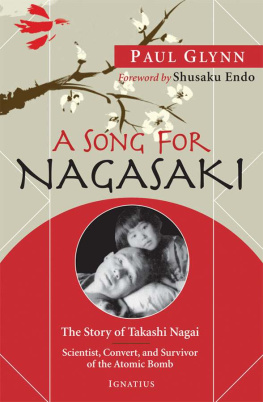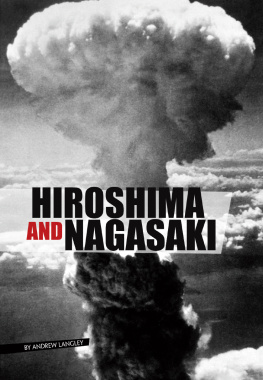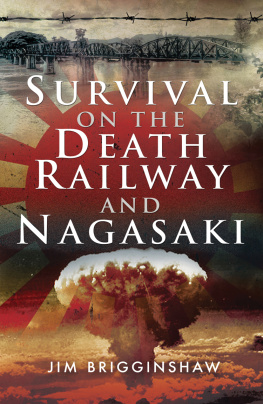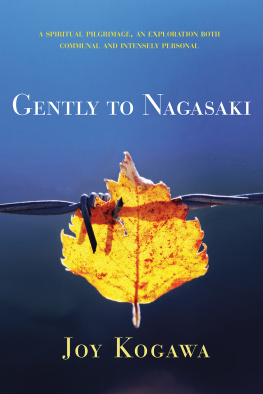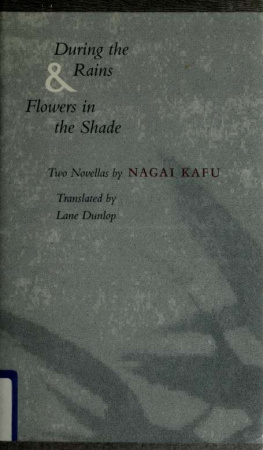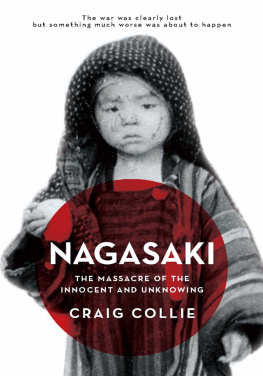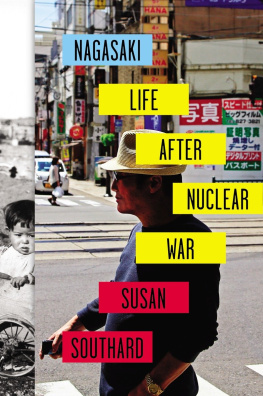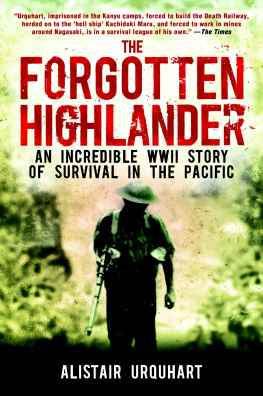Fr Paul Glynn - A Song for Nagasaki: The Story of Takashi Nagai: Scientist, Convert, and Survivor of the Atomic Bomb
Here you can read online Fr Paul Glynn - A Song for Nagasaki: The Story of Takashi Nagai: Scientist, Convert, and Survivor of the Atomic Bomb full text of the book (entire story) in english for free. Download pdf and epub, get meaning, cover and reviews about this ebook. year: 2009, publisher: Ignatius Press, genre: Detective and thriller. Description of the work, (preface) as well as reviews are available. Best literature library LitArk.com created for fans of good reading and offers a wide selection of genres:
Romance novel
Science fiction
Adventure
Detective
Science
History
Home and family
Prose
Art
Politics
Computer
Non-fiction
Religion
Business
Children
Humor
Choose a favorite category and find really read worthwhile books. Enjoy immersion in the world of imagination, feel the emotions of the characters or learn something new for yourself, make an fascinating discovery.
- Book:A Song for Nagasaki: The Story of Takashi Nagai: Scientist, Convert, and Survivor of the Atomic Bomb
- Author:
- Publisher:Ignatius Press
- Genre:
- Year:2009
- Rating:5 / 5
- Favourites:Add to favourites
- Your mark:
A Song for Nagasaki: The Story of Takashi Nagai: Scientist, Convert, and Survivor of the Atomic Bomb: summary, description and annotation
We offer to read an annotation, description, summary or preface (depends on what the author of the book "A Song for Nagasaki: The Story of Takashi Nagai: Scientist, Convert, and Survivor of the Atomic Bomb" wrote himself). If you haven't found the necessary information about the book — write in the comments, we will try to find it.
On August 9, 1945, an American B-29 dropped an atomic bomb on Nagasaki, Japan, killing tens of thousands of people in the blink of an eye, while fatally injuring and poisoning thousands more. Among the survivors was Takashi Nagai, a pioneer in radiology research and a convert to the Catholic Faith. Living in the rubble of the ruined city and suffering from leukemia caused by over-exposure to radiation, Nagai lived out the remainder of his remarkable life by bringing physical and spiritual healing to his war-weary people.
A Song for Nagasaki tells the moving story of this extraordinary man, beginning with his boyhood and the heroic tales and stoic virtues of his familys Shinto religion. It reveals the inspiring story of Nagais remarkable spiritual journey from Shintoism to atheism to Catholicism. Mixed with interesting details about Japanese history and culture, the biography traces Nagais spiritual quest as he studied medicine at Nagasaki University, served as a medic with the Japanese army during its occupation of Manchuria, and returned to Nagasaki to dedicate himself to the science of radiology. The historic Catholic district of the city, where Nagai became a Catholic and began a family, was ground zero for the atomic bomb.
After the bomb disaster that killed thousands, including Nagais beloved wife, Nagai, then Dean of Radiology at Nagasaki University, threw himself into service to the countless victims of the bomb explosion, even though it meant deadly exposure to the radiation which eventually would cause his own death. While dying, he also wrote powerful books that became best-sellers in Japan. These included The Bells of Nagasaki, which resonated deeply with the Japanese people in their great suffering as it explores the Christian message of love and forgiveness. Nagai became a highly revered man and is considered a saint by many Japanese people. Illustrated
Christians and non-Christians alike were deeply moved by Nagais faith in Christ that made him like Job of the Scriptures: in the midst of the nuclear wilderness he kept his heart in tranquility and peace, neither bearing resentment against any man nor cursing God.
--Shusaku Endo, from the Foreword
Fr Paul Glynn: author's other books
Who wrote A Song for Nagasaki: The Story of Takashi Nagai: Scientist, Convert, and Survivor of the Atomic Bomb? Find out the surname, the name of the author of the book and a list of all author's works by series.

